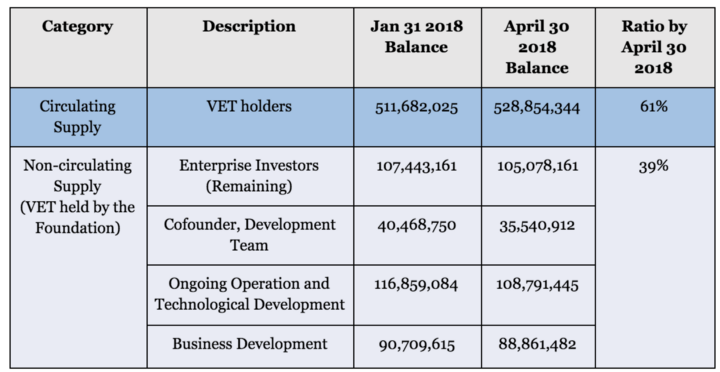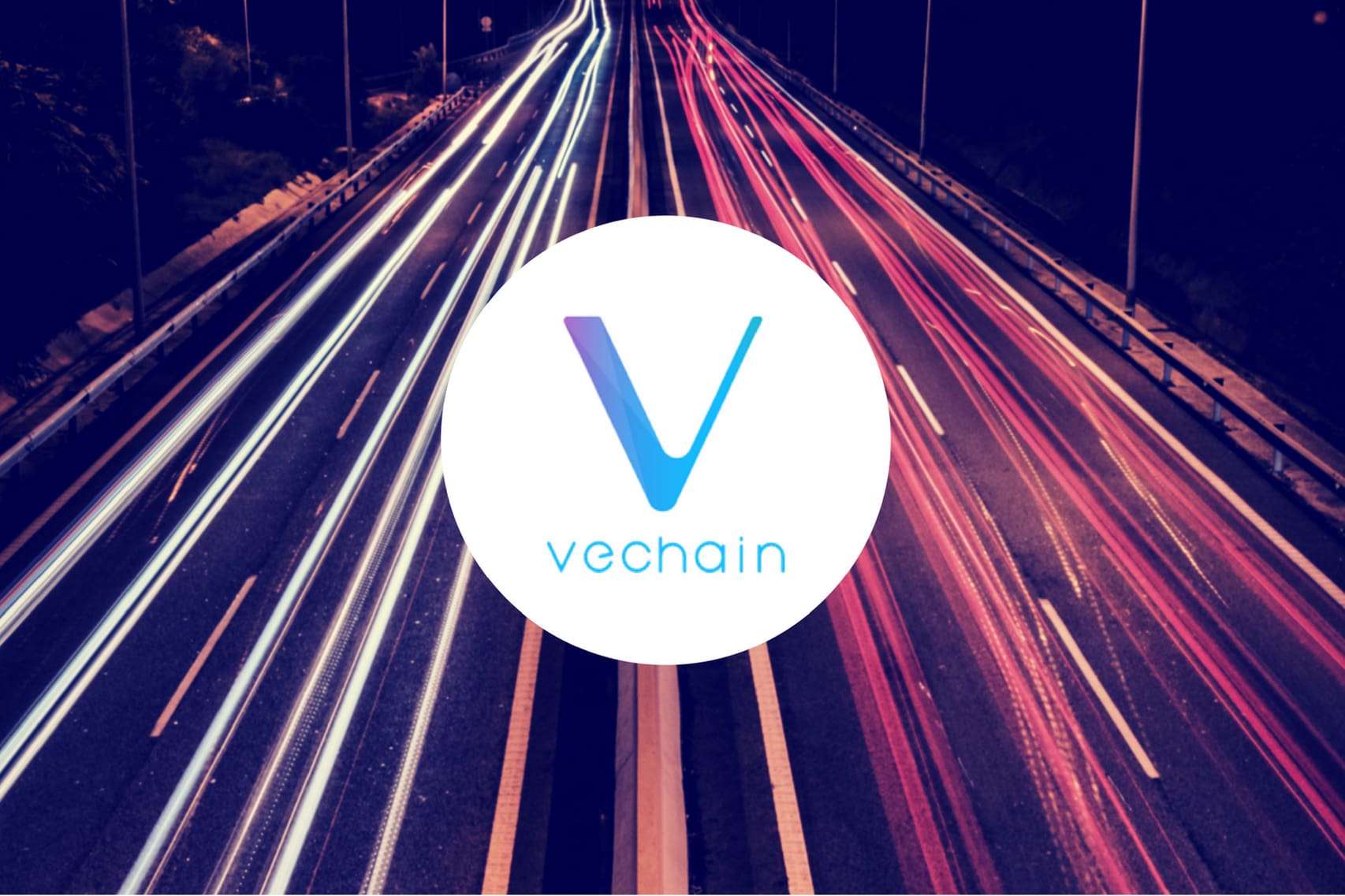VeChain, the supply chain-focused project which is prepping for an upcoming mainnet launch, has released their 3rd quarterly financial executive report.
The report details the numbers relating to their token supply, investor holdings, and expenditure on infrastructure and support for the project’s growth. This report, which is the last to be released before the VeChain launches the VeChainThor mainnet, is an effort by the team to remain transparent with its operations.
We will refer to the token as VET here, though that form of the token will only appear with the mainnet. The ratio of the split is 1:100. Holders of the current VEN token will receive 100 VET tokens.
Token Economy
The report begins by evaluating the rise in circulating token supply since Q1 2018. The current circulating supply of VET tokens (approximately 528 million) is roughly 61%, which is up 2% from the 1st quarter.
The remaining 39%, which makes up the non-circulating supply and is held by the VeChain foundation, is divided among enterprise investors, the co-founder and development team, business development, and operation and technological development.
These 4 non-circulating sub-sections have received a marginal decrease in amounts.

The teams notes that, while more interest has been shown in their project, most enterprise-level investors have obtained VET tokens from the open market. However, a few million tokens have been handed directly to enterprise investors through the non-circulating supply set aside for them.
The team also receives VET rewards on a quarterly basis. It appears that a total of 4.25 million VET tokens are paid out to the entire team every quarterly period, which they have all agreed to lock up for a minimum of 2 years. That is a positive sign that the team is developing the project with the conviction that it will genuinely make an impact.
Lastly, the purpose of development and the corresponding allocation of VET has been to persuade companies to work with the platform, and to invest in it with VET instead of Bitcoin and Ethereum. The total figure, at the current price of VET, would put the funds for development somewhere around $600 million.
Project Expenditure
To their credit, with this report, the team is communicating their expenses on a consistent basis.
With a total expenditure of about 3000 ETH, or $2.1 million dollars, the costs have been mostly to do with developing the infrastructure and backbone for the project.
This time around, most of the funds have been spent on ecosystem, business, and technological research and development, with the expenditure being 39.94%, 25.1% and 32.99% respectively. Compliance and legal fees have amounted to about 1.17% of the total expenditure.
Specifically, the team has used the resources for scalability, IoT sensors, a hardware wallet, marketing and growing the team.
Marketing and Outreach
Several events and community programs have taken place in this quarter. For many projects, to reach critical mass adoption, the cryptocurrency market must invest a considerable amount of effort to raise awareness about their existence the several projects – Bitcoin may be a household name, but altcoins are almost unheard of.
To that end, projects conduct such campaigns as ambassador programs to help spread the word. On its part, VeChain has held a technical AMA (which are always popular with the community), a video contest, conferences and seminars in Seoul and China, and several talks with various industry entities. The full list can be viewed on the blog post .
Partnerships
The months of February and April also appear to have been fruitful in terms of partnerships, which are essential component for a platform that is aimed at modernizing the supply chain industry. VeChain has made headway with the liquor, agricultural and luxury goods industries.
Supply chain is one of the many areas of the economy that is ripe for blockchain application, and other projects in this space are also devoting a lot of their efforts towards forming partnerships.
This quarter, VeChain has announced partnerships with the following entities:
- iTaotaoke
- Australian 188 Business Alliance Association
- Yida Future
- LogSafer
- Shanghai eGrid Consulting Co., LTD
- INPI Asia
The partnerships cover a range of industries, including IoT, logistics and shipping, real estate and smart cities, small and medium businesses, and media.
Concluding Remarks
The report comes in the middle of a busy time for the project. In May, multiple projects announced that it would use the VeChainThor blockchain including Plair, which will be the first ICO to launch on VeChainThor. In terms of partnerships, they partnered with Bright Foods, China’s second largest food company and Lingang Intelligent Manufacturing Exhibition Trading Center, a state owned enterprise. They are even expanding the ecosystem to include the equine industry.
Expect fervor in the market as we get closer to the mainnet launch. With committed participation in this space and the potential of the Asian market, VeChain could very well make great strides in the next 18 or so months.
Related: VEN to VET: the VeChain Thor Rebranding and What the Future Holds

